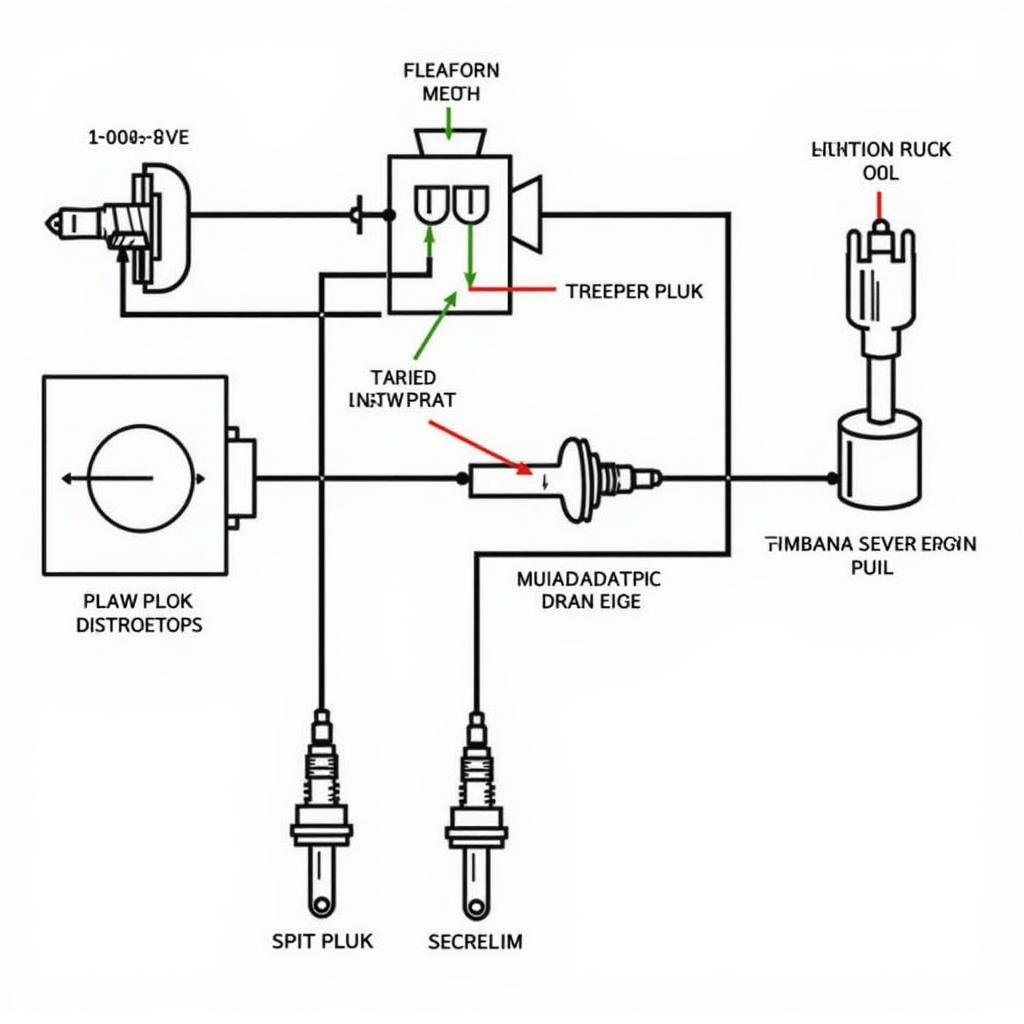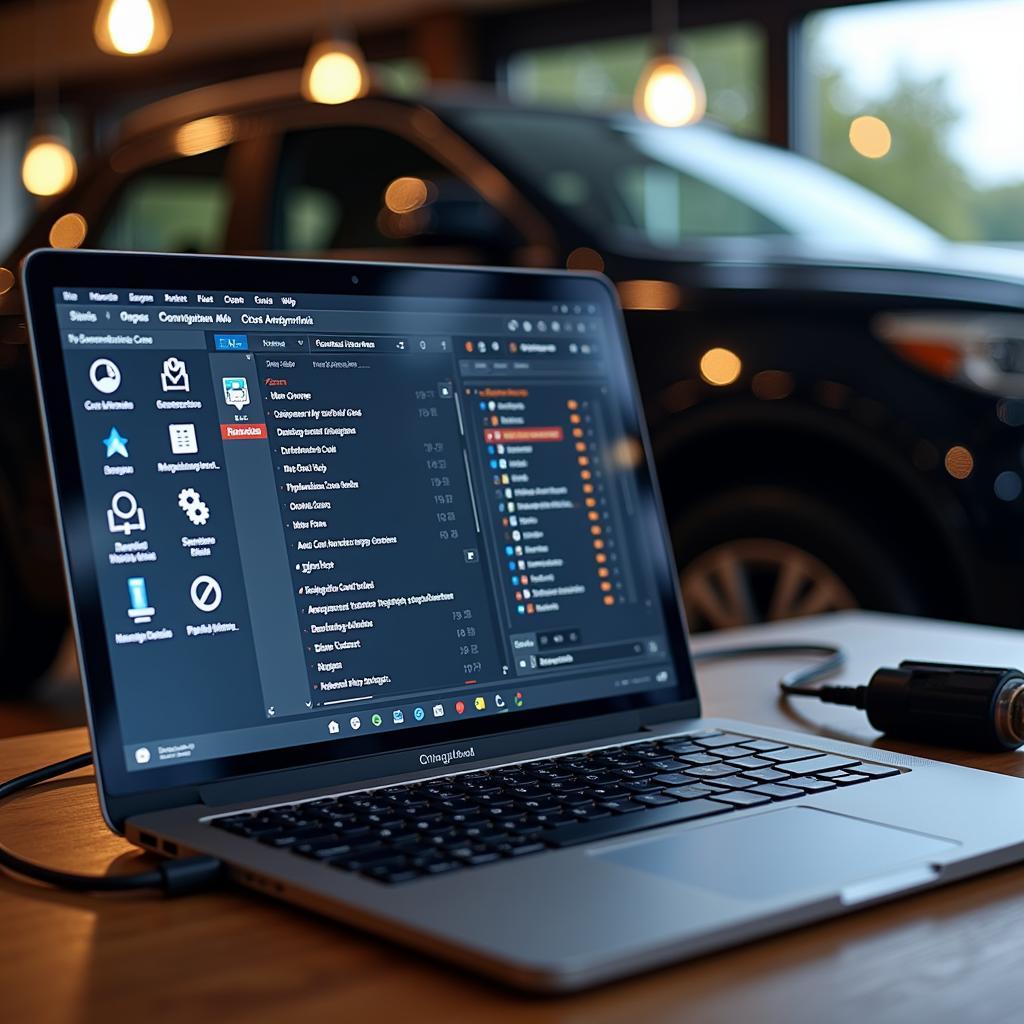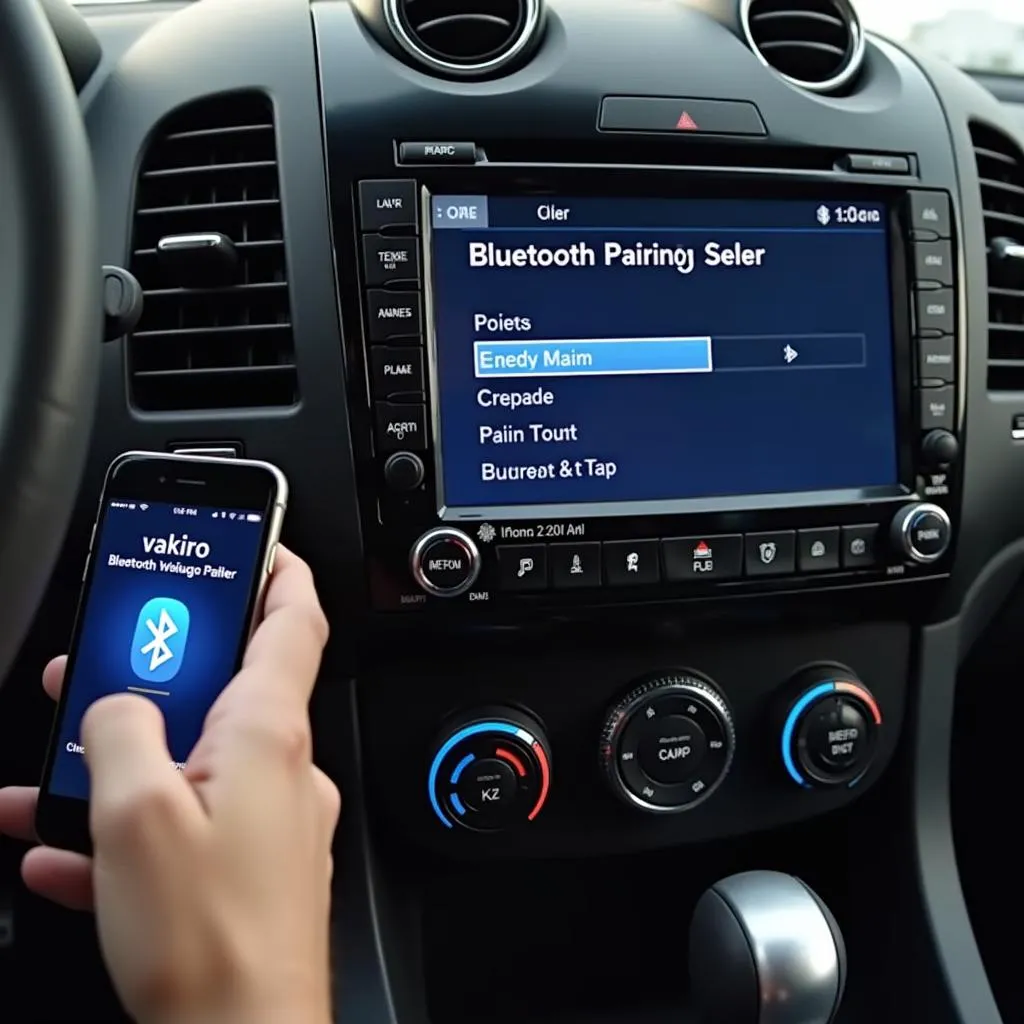You changed your ignition switch, expecting your car to roar back to life, but it’s still stubbornly refusing to start. This frustrating scenario is more common than you think, and understanding why it happens is the first step to getting back on the road. This guide will delve into the possible reasons why your car won’t start even after replacing the ignition switch, providing diagnostic tips and solutions.
Understanding the Ignition System
The ignition system is the heart of your car’s starting process. It’s responsible for supplying the spark that ignites the fuel-air mixture in the engine cylinders. When you turn the key, the ignition switch activates a series of components, including the starter motor, ignition coil, and distributor (in older vehicles). A faulty ignition switch can disrupt this process, preventing the car from starting. However, even with a new ignition switch, other issues can still prevent the engine from turning over.
 Car Ignition System Components Diagram
Car Ignition System Components Diagram
Common Culprits When Your Changed Ignition Switch Car Won’t Start
So, you’ve changed the ignition switch and the car still won’t start. Now what? Several other components might be the culprits. Let’s explore the possibilities:
1. Starter Motor Issues
A failing starter motor is a common reason why a car won’t start, even with a new ignition switch. The starter motor is responsible for cranking the engine, and if it’s malfunctioning, the engine won’t turn over. Symptoms of a bad starter motor include a clicking sound when you turn the key, a grinding noise, or complete silence.
2. Wiring Problems
Loose or corroded wiring connections within the ignition system can prevent the proper flow of electricity, hindering the starting process. changed car battery and still wont start Check all the connections related to the ignition switch, starter motor, and other ignition components.
3. Faulty Ignition Coil or Distributor
The ignition coil transforms the battery’s low voltage into the high voltage required to create the spark. A faulty coil won’t generate sufficient voltage, preventing the engine from starting. Similarly, a malfunctioning distributor (in older vehicles) can disrupt the spark distribution to the spark plugs, leading to starting problems.
4. Fuel System Problems
A lack of fuel or a faulty fuel pump can also prevent the car from starting. Make sure you have enough fuel in the tank. A failing fuel pump may not deliver sufficient fuel to the engine.
5. Immobilizer Issues
Modern vehicles have immobilizers that prevent unauthorized starting. If the immobilizer malfunctions or doesn’t recognize the key, it can prevent the car from starting.
Diagnostic Steps
- Check the Battery: Ensure the battery has sufficient charge.
- Inspect the Wiring: Examine all wiring connections related to the ignition system. Look for loose, corroded, or damaged wires.
- Test the Starter Motor: Use a multimeter to test the starter motor.
- Check the Fuel System: Ensure adequate fuel and test the fuel pump.
- Diagnose the Immobilizer: If suspected, use a diagnostic scanner to check for immobilizer-related faults.
“A common mistake people make is assuming the new ignition switch is the solution to all starting problems,” says John Smith, a veteran automotive electrical engineer. “A systematic diagnostic approach is crucial to pinpoint the actual culprit.”
Remote Diagnostics and Programming
Remote diagnostics and programming can be a valuable tool for identifying complex issues within the ignition system and other related systems. Specialized software can access the vehicle’s onboard computer to retrieve diagnostic trouble codes (DTCs) and pinpoint the source of the problem. Remote programming allows technicians to update or reprogram the car’s software to address certain malfunctions.
 Remote Car Diagnostics Software on Laptop
Remote Car Diagnostics Software on Laptop
“Remote diagnostics is particularly helpful in identifying intermittent issues that can be difficult to reproduce in a traditional shop environment,” explains Sarah Jones, Lead Diagnostic Technician at AutoTech Solutions.
Conclusion
While changing the ignition switch is sometimes the solution, it’s not always the only answer when your car won’t start. By following a systematic diagnostic approach, you can identify the real issue and get your car back on the road. If you’re unsure, seeking professional help from a qualified automotive electrician is always a good idea. Remember, a properly functioning ignition system is crucial for a safe and reliable driving experience.
FAQ
- Can a bad ignition switch drain the battery? Yes, a faulty ignition switch can sometimes drain the battery by leaving certain electrical circuits active even when the car is off.
- How long does it take to change an ignition switch? The replacement time varies depending on the car model, but it generally takes between 1-3 hours.
- What are the symptoms of a bad ignition switch? Symptoms can include flickering dashboard lights, difficulty turning the key, the car stalling while driving, or the car not starting at all.
- Can I change the ignition switch myself? While it’s possible, changing the ignition switch can be complex and requires some mechanical knowledge.
- How much does it cost to replace an ignition switch? The cost depends on the car model and labor rates, but it typically ranges from $150 to $400.
- What tools do I need to replace an ignition switch? Common tools include screwdrivers, a steering wheel puller, and possibly some specialized tools for your specific car model.
- What should I do if I suspect my immobilizer is faulty? It’s best to consult a qualified automotive locksmith or technician who can diagnose and address immobilizer issues.

